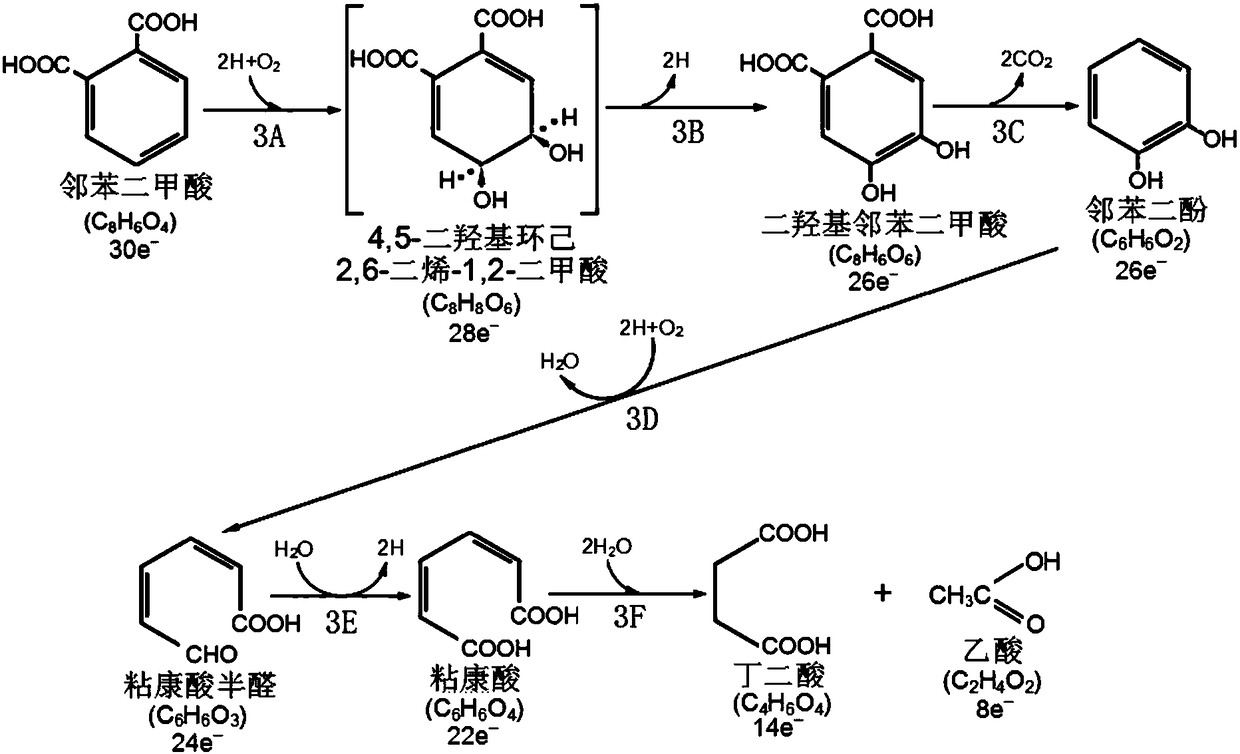Apparatus and method for accelerating biodegradation of difficultly degraded pollutant by using residual sludge
A technology that is difficult to biodegrade and excess sludge is applied in water pollutants, chemical instruments and methods, water/sludge/sewage treatment, etc. It can solve problems such as secondary pollution, accelerate biodegradation, and solve sludge treatment. The effect of resource
- Summary
- Abstract
- Description
- Claims
- Application Information
AI Technical Summary
Problems solved by technology
Method used
Image
Examples
Embodiment 1
[0045] In this example, the supernatant of excess sludge was used as an electron donor to accelerate the biological treatment of quinoline-containing sewage, and an organic acid (oxalic acid) was added as an electron donor for comparison. In the experiment, quinoline was used as the object for batch degradation experiments. Quinoline is an aromatic compound widely used in medicine, printing and dyeing, and rubber industries. In the process of use and manufacture, it is inevitable that some leakage will enter the natural water body. Once it enters into natural water bodies, it will cause harm to human health. In addition, quinoline is a kind of organic pollutant that is difficult to degrade, that is, when it is biologically treated by common biodegradation methods, its degradation rate is relatively slow.
[0046] In this application example, the biodegradation of quinoline is carried out by using domesticated microorganisms to inoculate the bioreactor. The specific degradat...
Embodiment 2
[0049] In this experiment, p-nitrophenol was used as the object. P-nitrophenol is mainly used as an intermediate of fine chemicals such as pesticides, medicines, and dyes, and is also a kind of organic pollutant that is difficult to biodegrade. Its biodegradation involves both aerobic and anaerobic conditions.
[0050] In the experiment, the domesticated microorganisms are first inoculated into the bioreactor, and the operating conditions are controlled so that the reaction can have both an aerobic zone and an anaerobic zone. For specific biodegradation, it is divided into two groups. The first group is the direct biodegradation of nitrophenol without adding any electron donor, the second group is to add the supernatant of the sludge after ultrasonic treatment as the electron donor, the results are as follows Figure 7 shown. from Figure 7 It can be seen that the addition of the supernatant of the sludge after sonication resulted in a 109% increase in the biodegradation r...
PUM
 Login to View More
Login to View More Abstract
Description
Claims
Application Information
 Login to View More
Login to View More - Generate Ideas
- Intellectual Property
- Life Sciences
- Materials
- Tech Scout
- Unparalleled Data Quality
- Higher Quality Content
- 60% Fewer Hallucinations
Browse by: Latest US Patents, China's latest patents, Technical Efficacy Thesaurus, Application Domain, Technology Topic, Popular Technical Reports.
© 2025 PatSnap. All rights reserved.Legal|Privacy policy|Modern Slavery Act Transparency Statement|Sitemap|About US| Contact US: help@patsnap.com



